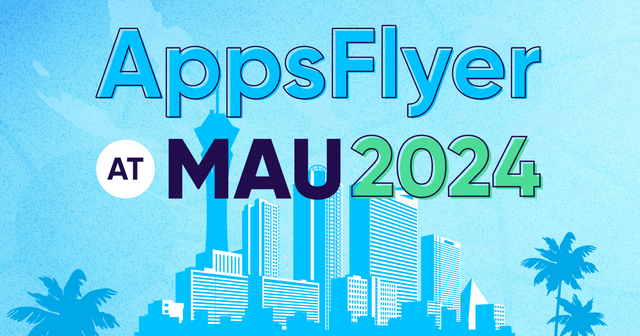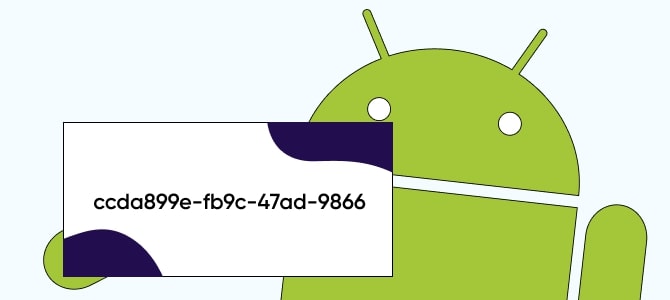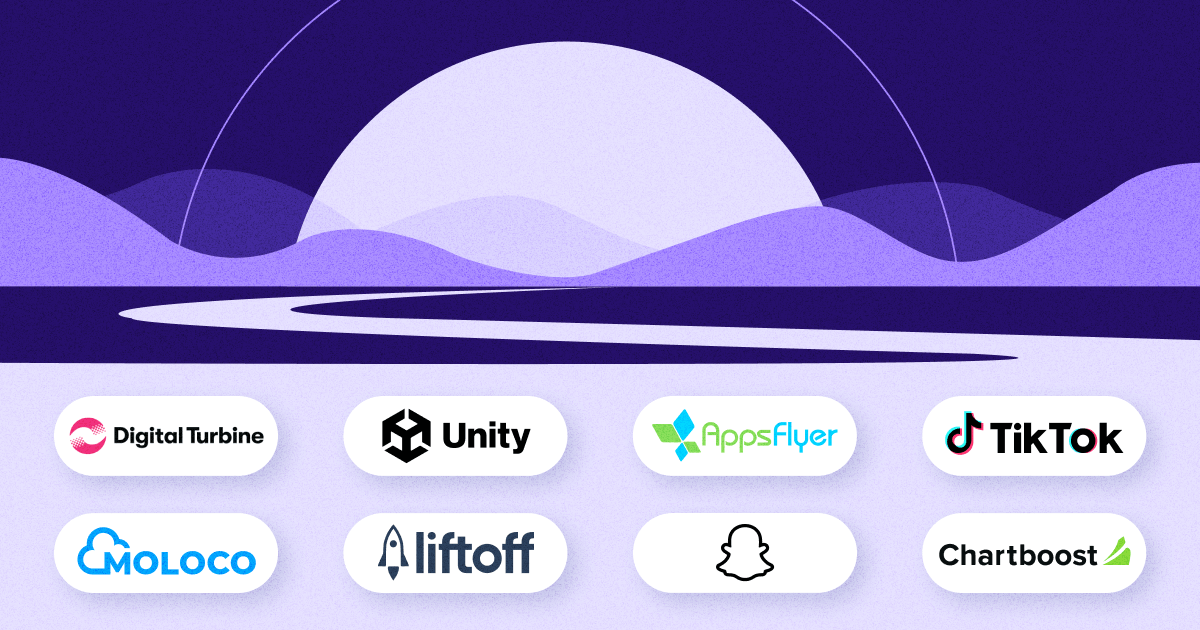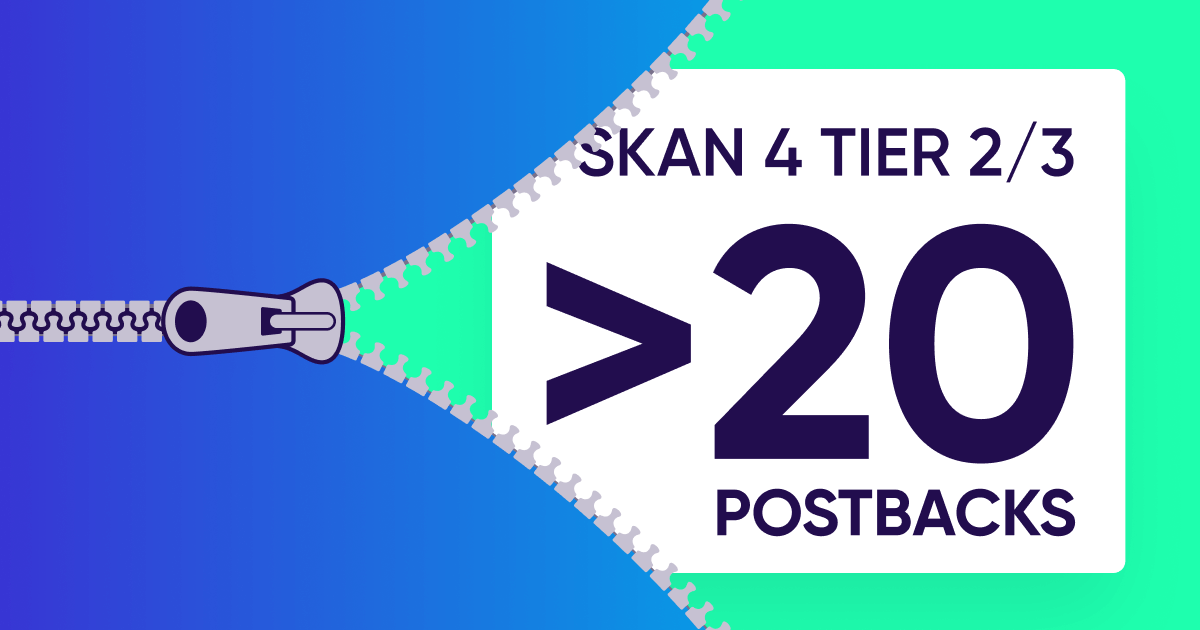
GAID (Google Advertising ID)

Google Advertising ID — aka GAID, aka Android ID, aka Android Advertising ID (AAID) — is a unique device identifier that enables app developers and marketers to measure campaign performance and user behavior across media sources, without compromising user privacy.
What is GAID?
Introduced in 2014, GAID lets advertisers track an app user’s ad views, app activity, and conversions through a unique device identifier (similar to a cookie on a web browser).
As a Google product, GAID is the Android equivalent of Apple’s IDFA (Identifier for Advertisers).
The evolution of privacy
Of course, we can’t talk about device IDs without considering the implications for user privacy.
The original identifier was Apple’s UDID (Unique Device Identifier). This was a permanent device number, which the user had no control over once it was shared. To improve confidentiality, in 2012 Apple replaced UDID with IDFA, which users can reset at any time.
Google followed suit with GAID, which provided users with an option to reset their identifier while still allowing their device identifier to be visible to media vendors and mobile measurement partners (MMPs).
Apple shook things up with iOS 14 and the launch of its ATT privacy framework, which requires users to opt in to sharing their IDFA with individual apps. Meanwhile, Android 12 OS users could opt out of personalized ads, meaning their GAID would be unavailable to app developers or marketers for any purpose, showing them a string of zeros instead.
But with privacy concerns increasingly top of users’ minds, Google is preparing to take things even further by scrapping GAID altogether. Keep reading to discover what that could mean for app marketers.
Why GAID is (or was!) important
Over the past decade or so, GAID has played an important role in the mobile advertising ecosystem. App marketers have relied on it for three key activities:
- Measurement and attribution
Tracking device IDs provides a neat way for advertisers to measure campaign success based on user behavior. It provides accurate attribution data, in other words, showing which ads or media sources were responsible for users taking a desired action, such as an app install or in-app purchase.
- Segmentation
GAID’s device-level data has helped marketers to effectively segment their audiences based on specific attributes, such as device type, install date, favorite products, or spend. That information enables them to reach users with more targeted and relevant campaigns. Additionally, third-party data sharing allows ad networks to build up detailed user personas.
- Personalization
Now you’ve done all that beautiful segmentation, it’s time to craft campaigns that really resonate with your different audiences. GAID can provide an insight into users’ interests, preferences, pain points, and behaviors, enabling marketers to customize ad messaging and timing for optimal results.
How to find your GAID?
Although these steps may differ slightly depending on your device and operating system, here’s the gist of what you need to do to find your device’s GAID:
- Open the Settings app on your Android device
- Click on Google
- Select “Ads” under Services
- Your GAID number will be listed at the bottom of the screen
Note: The “Reset advertising ID” option offers users a brand-new GAID number, but does not delete user-level data registered under their old GAID.
Privacy in the future: jump into the Sandbox

Google’s announcement in February 2022 about its plans for a new Privacy Sandbox sent shockwaves through the digital marketing world. This collaborative, industry-wide initiative was designed to enhance user privacy, but left marketers wondering: what’s happening to GAID, and how will we get the data we need to run successful campaigns?
The Sandbox is a cross-platform solution that will limit user tracking and third-party data sharing, while providing safer alternatives to existing technologies. And, at some point in 2024, it will replace GAID altogether.
What will this mean for the current uses of GAID?
As mentioned earlier, app marketers have relied heavily on GAID for measurement and attribution, segmentation, and personalization. So what does the future look like without it? Here’s our take:
- Attribution: It looks like Google Play Referrer will stick around, running in parallel with the Privacy Sandbox. This will enable real-time attribution, as well as deep linking. What’s more, the Sandbox has its own Attribution Reporting API. Together, these solutions will enable MMPs to build up a holistic picture of attribution.
- Segmentation: Google’s proposed FLEDGE solution could replace GAID’s segmentation capabilities. It’s designed to enable advertisers to define audiences using on-device lists, without sharing the end users’ identifier.
- Personalization: Here, Google plans to use TOPICS, a solution that will provide app publishers with relevant topics for interest-based ad serving. At first, this will be based on public information uploaded to Google Play, which has its limitations — but it’s anticipated to become more sophisticated and effective over time.
You can read more detail on how all this will work in this blog from AppsFlyer’s iOS expert.
As we prepare to say goodbye to GAID, one thing’s for sure: we’re entering a new app marketing landscape, and marketers need to be ready to jump into the Sandbox with both feet. Working with an MMP can make this a lot less scary, and help you get the most from the new solutions on offer.
Key takeaways
- Google Advertising ID (aka GAID) is a unique device identifier that enables app developers and marketers to measure campaign performance and user behavior across media sources, without sharing user-level data with third parties.
- GAID is used on Android devices, while IDFA is the equivalent for iOS — one difference being that Apple users must opt in to sharing their IDFA with each app. Android users can choose to reset their GAID or opt out of personalized ads, in which case advertisers and developers will see a string of zeros in place of their GAID.
- GAID has provided marketers with vital insights for measurement and attribution, segmentation, and personalization of campaigns.
- In 2024, Google will replace GAID with its Privacy Sandbox. This will enhance user privacy and limit the data marketers can access and share. However, alternative solutions are being introduced, and an MMP can help you get the most out of them.



